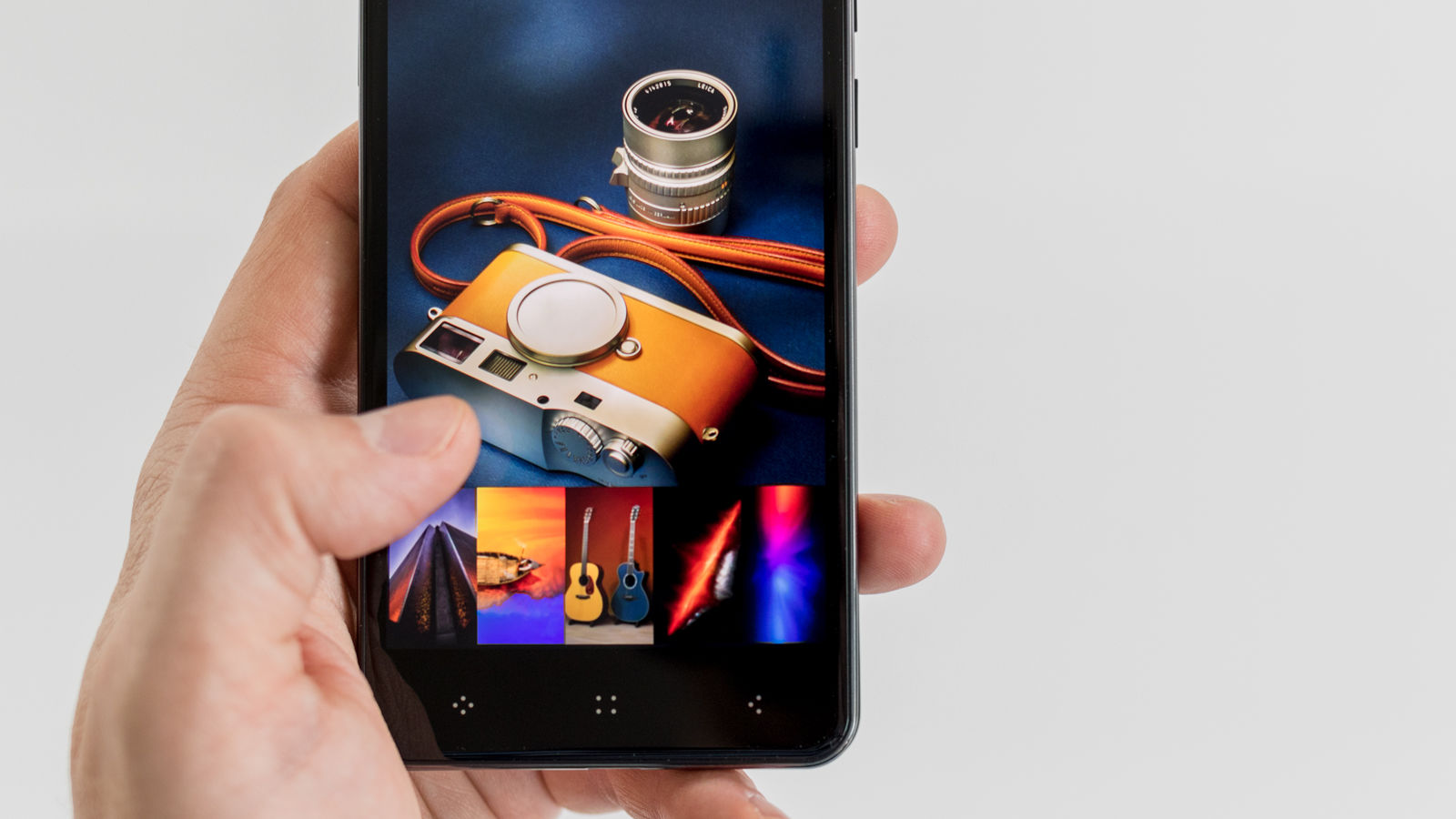Believe what you’re reading, though, because the Elephone P8 Mini is a circa-£120 Android Nougat phone with some impressive strings in its bow, and a worthy competitor to the UK’s best budget phone, the Moto G5. Naturally, there is some cost-cutting too, which we’ll come on to later in this review. Also read: Best budget phones 2017
Elephone P8 Mini Price and UK availability
We’ve reviewed the black Elephone P8 Mini, which oddly is now marked as discontinued at GearBest, but red (£123.44/$159.83/138.72€) and blue (£123.78/$160.27/139.10€) options are available and shipping mid-August. GearBest supplies the Elephone P8 Mini from its Hong Kong warehouse, which means on arrival in the UK you may be asked to pay import duty. This is calculated at 20 percent of the value on the shipping paperwork, plus an admin fee of around £11. Even allowing for this, the P8 Mini appears to offer amazing value, especially when paired with a good-value SIM-only deal. Unlike many Chinese phones it supports all three UK 4G LTE bands, so there won’t be any issues with connectivity (save for the omission of NFC). If you’re concerned about buying tech from China, check out our guide before you take the plunge. (Also see: Best Chinese phones 2017)
Elephone P8 Mini Pros and Cons
Pros:
• Budget price tag • Latest Android 7.0 Nougat operating system with user-friendly interface • 64GB of storage plus expansion through microSD (up to 128GB) offers plenty of space for all your files • 4GB of RAM useful for multitasking • 5in full-HD display is sharp and colourful • Fingerprint scanner is responsive • 16Mp is a very high resolution for a selfie camera, plus it comes with a soft LED flash • Dual-camera on the rear • Dual-SIM dual-standby
Cons:
• Partly plastic build and low weight lends a cheap feeling to phone • Not powerful enough for intensive gaming • Battery won’t last longer than a day • Cameras are good for a budget phone, but not as impressive as they sound on paper • No LED notification light • No backlighting on capacitive buttons under screen • Not the best audio quality • No NFC
Elephone P8 Mini Design and Build
The P8 Mini has several things in its favour when it comes to design. For a start, it’s genuinely nice to see a 5in smartphone with a full-HD screen – so many of the budget- to mid-range phones we review have massive 5.5in panels that are simply too big for some people’s taste. Children are a perfect example, and with little hands they’re much more likely to drop and break some of those larger handsets. Save for the omissions of waterproofing and Gorilla Glass screen protection (understandable at this price), it’s difficult to see how the P8 Mini could have been better designed for a child. Not only is it well priced, which will keep most parents happy, but it has a compact and very lightweight frame. Though the rear panel is metal, and the display obviously glass, the majority of the device is made from plastic. Top and bottom panels at the rear are plastic. The frame is plastic. The screen surround is plastic too, albeit polished to mirror chrome. And despite all this plastic the P8 Mini still has a reasonably premium-looking design, with minimal bezels and a very slight 8.1mm width. It also feels pretty sturdy, with no obvious flexing or creaking as you apply pressure to the frame. It’s the capacitive key labels below the screen and the toy-like light weight (just 133g) that give away its budget price. The display is a full-HD panel from Sharp that Elephone says acts like AMOLED. It’s certainly vibrant, with the same saturated colours we’d expect to see on AMOLED, and viewing angles are strong. It’s not as bright as the panel you might see on a flagship – we measured a maximum 350cd/m2 – but of course this is no flagship. Clarity, though, is very good, with the 1920×1080-pixel resolution resulting in a density of 440 pixels per inch – higher than on an iPhone. The P8 Mini has a very flat design, curved only at the extreme edges on the rear. The screen mirrors this effect with its use of 2.5D curved glass, which makes the gesture feel much smoother as you run a finger across the surface. (Also see: Best phones 2017) Everything is where you would expect to find it, with a slot-loading SIM tray on the left edge – this can accommodate either two Nano-SIM cards ( dual-standby) or a Nano-SIM plus a microSD card up to 128GB in capacity – and a volume rocker and power button on the right. Down the bottom is a Micro-USB port (reversible USB-C is now found in some budget phones, but is not yet a given), a 3.5mm headphone jack and a row of drilled out holes from which the mono speaker can emit sound. It’s not the best audio quality, but it’s loud enough. Above the screen you’ll spot an LED, which serves as a soft flash for the selfie camera and helps it to take better photos in low-light. We like the idea of this feature, but it doesn’t improve photography enough to warrant the P8 Mini’s exclusion of a notification LED. Things don’t get better below the screen, where three Android-standard capacitive keys are found with no backlighting, meaning their legends are always visible and detract from the Elephone’s overall design. The P8 Mini looks better from the rear, thanks to that metal panel that is devoid of any labelling bar a small Elephone logo. At the top corner is a dual-camera that sits almost flush with the case, and though it is paired with only a single-LED flash it does look pretty cool. Add to this the rear-mounted fingerprint scanner, centrally sited to land just under the index finger and quickly unlock the phone and wake the screen, and the P8 Mini doesn’t look like a £120 phone. (Also see: Best Android phones 2017)
Elephone P8 Mini Core Hardware & Performance
The Elephone P8 Mini runs an octa-core MediaTek MT6750T processor. With eight Cortex-A53 cores running at 1.5GHz and a generous 4GB of RAM, multi-tasking is quite possible on this budget phone, though its integrated ARM Mali-T860 GPU isn’t up to much more than watching video and playing casual games. That’s exactly what we saw in real-world testing, with no sign of lag from the Android Nougat OS. Our benchmarks corresponded with these findings, recording results that are capable but not especially impressive. Hardcore gamers will unlikely be satisfied, but most other users should be able to handle their daily tasks just fine.
Performance is very much on par with the Snapdragon 430-powered Moto G5, one of the best-selling budget phones in the UK. Our benchmark results were almost identical to those of that phone, with 2,488 points in Geekbench 4 (2,338 Moto G5) and 40,922 in AnTuTu. Gaming framerates were mirrored in GFXBench too, with 15fps scored in T-Rex, 7fps in Manhattan, 5fps in Manhattan 3.1 and 2fps in Car Chase. Even JetStream, the JavaScript benchmark, recorded 17.4 for both phones. Of course, where this P8 Mini differs from the Moto G5 is in storage, and while both support microSD up to 128GB the Elephone offers a huge 64GB internal capacity compared to the Moto G5’s 16GB. The battery capacity is slightly lower than that of the Moto G5, rated at 2680mAh against its 2800mAh, but it should last a full day with medium usage (you can always add a power bank if required). The Turbo Charge-compatible Moto G5 will charge faster though, with only a 1.5A charger supplied in the box for this Elephone. (Note that this has a two-pin plug, so you’ll probably prefer to use your existing charger than find an adaptor.)
Elephone P8 Mini Cameras
The cameras are going to be one of the key specifications to convince consumers to buy this phone. On paper they sound amazing – a 16Mp selfie camera plus a dual-camera on a £120 phone? Wow. However, we should say that the main rear camera is rated at 13Mp, in common with the Moto G5, and the second lens is a basic 2Mp snapper that can create very basic bokeh effects. The single-LED flash isn’t up to much in low-light, so things look a lot more impressive on paper than the results appear in reality. The rear camera was able to capture a good amount of detail, and in good light produced mostly realistic colours. The image is sharper in the centre than toward the extreme edges, however, and while HDR mode (second image) did a good job of lightening the shadows it made the entire image appear a little more washed out. (Also see: Best phone camera 2017.) Shooting our low-light scene the Elephone P8 Mini appeared to do a good job for a budget phone, but when we compared to the results to that of a camera such as on the Galaxy S8 it became clear that it wasn’t anything like as capable at lighting up the shot, and while text remained readable there was much more noise. The camera app is relatively basic, with real-time filters and a handful of preset modes available, including Beauty, Blur and Panorama. HDR is either on or off, with no automatic option. If video’s your thing there are more capable smartphone cameras out there, with the P8 mini shooting in a maximum 1080p resolution and with no continuous autofocus. The selfie camera has a huge megapixel rating at 16Mp, but as we know that doesn’t always make for a decent quality photo. Snaps are very clear with standard settings, but it’s easy to overdo things on the beauty mode and create an unnatural level of skin smoothing. The soft flash can help a little in low light, but it’s by no means a perfect solution. We’d also like to be able to unflip the photo, since selfies are automatically reversed to create a mirror image.
Elephone P8 Mini Software
The P8 Mini runs an up-to-date version of the Android 7.0 Nougat operating system, apparently with the ELE 1.0 OS over the top. To us it looks exactly like standard Android, and doesn’t appear to include the extra apps other reviewers have mentioned. Marie is Editor in Chief of Tech Advisor and Macworld. A Journalism graduate from the London College of Printing, she’s worked in tech media for more than 17 years, managing our English language, French and Spanish consumer editorial teams and leading on content strategy through Foundry’s transition from print, to digital, to online - and beyond.







